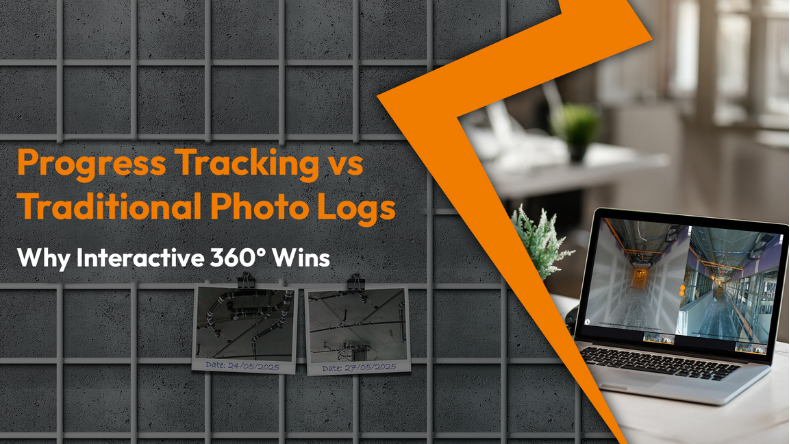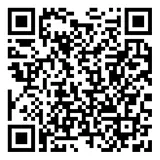Reading Time: 5 minutes
Introduction.
Large-scale projects are rigged by complexities from start to finish. Be it planning, design, or construction. In this article, we are focused on construction or job site activities. Documenting the site using visual modes is crucial for project monitoring, accurate reporting, and tighter communication. Manual or obsolete methods of logging the site with static photos were a go-to method to document the job site, but modern construction requires a lot more than static images as they are just mediocre reference points. These images cannot help stakeholders like architects, general contractors, and owners leverage an immersive experience that is highly data-rich.
In the present day, 360 photo documentation tools like Lens360 are setting high standards with greater accuracy, visualization, and other capabilities to manage and process on-site data. The following article focuses on the shortcomings of obsolete photo logging, which is why interactive progress tracking in 360 is needed. The capabilities of Lens360 are extended when integrated with 3rd party platforms like Autodesk Construction Cloud and Procore.
Work Smarter, Not Harder
iFieldSmart empowers your team with AI-driven efficiency to simplify scheduling, boost collaboration, and keep projects on track.
Schedule a MeetingUnderstanding the shortfalls of old photo logging techniques and tools.
Legacy methods and tools for photo logging include flat or static images that are saved in unorganized folders and not labeled by location or date. While these deliverables provide some evidential support to assess project progress, these photos are generally siloed, static, and disconnected from a stream of project data.
Various challenges are observed which include the following:
- Disconnected data: Photo logging in silos is disconnected from observations, RFIs, and submittals which requires a separate team of people to cross-check data within multiple systems.
- Context in a limited sense: In the absence of spatial data, it becomes challenging for general contractors, field personnel, and other stakeholders to pinpoint the location of the photo and how it connects with other components on the site.
- Ineffective workflows: Greater human intervention including manual uploads, markups, organization, and sorting of images consumes time and is error-prone.
- Inconsistent collaboration: Back-office and field teams feel it is challenging to stay focused while depending on disconnected and static visuals.
As projects show greater complexity and timelines are condensed, legacy methods to document photos are not able to provide impactful results and are driven by inaccuracies and delays.
Setting a new standard in immersive 360 progress monitoring.
Immersive 360 documentation provides users with a profound on-site experience through advanced and interactive dashboards. Platforms like Lens360 have continued to change how job site progress is documented, viewed, and processed by embedding visuals that are immersive and data that is centralized.
Lens360 is a central platform that provides interactive project intelligence with the capability to generate, link, and manage various observations and RFIs within the image itself.
Top 4 benefits of Lens360 as an intuitive 360 photo documentation tool.
Transcending beyond static documentation.
While static images are just able to show a few moments of the job site, 360 tools like Lens360 provide comprehensive spatial relationships, which allows users to walk the site in 3D space and connect with specific components within the project. It becomes simple for users to pan, zoom, and navigate the project from the job site or remote locations.
These tools have the capability to integrate project information within the photo or image itself.
- Click on the 360 photo to raise observations or RFIs in real time.
- Embed multiple comments, assign responsibilities to various trades, and link required floor locations.
- Connect every problem or punch item to accurate spots within photos.
Making it easy for users to seamlessly align with various construction management tools.
Platforms like Lens360 integrate quickly with tools like Autodesk Construction Cloud and Procore through bi-directional synchronization.
- Creating observations and RFIs within the Lens360 platform can automatically synchronize with existing project management tools.
- Project data including drawings, submittals, and clash reports can be extracted into the 360 framework for a full context view.
- Back-office and field teams can stay connected without switching between silo tools.
This level of third-party integration eliminates information silos, reduces duplicate entries, and enhances the decision-making process. It also supports users with real-time access using a visual or 360 photo-driven framework.
Acts as a unified platform for project-wide intelligence.
Photo documentation with Lens360 is more than mere progress monitoring, it is an interactive record of the job site. Every walkthrough can act as a visual timeline, wherein project stakeholders can:
- Switch from photo references to clash reports, submittals, RFIs, or any other external link.
- Accelerate decision-making through a visual sense.
- Monitor important project markers through visual sources.
This helps users with greater clarity, higher accountability, and a significant reduction in disputes based on a documented trail of onsite events.
Significant cost and time savings based on effective workflows.
Immersive 360 platforms like Lens360 can align people and systems with higher simplicity. Instead of switching through disorganized folders containing static photos, teams can do the following:
- Expedite issue identification.
- Flag and resolve RFIs within quicker timelines.
- Deliver transparent visual updates to various stakeholders without the need for cluttered reports.
This creates faster TAT, mitigates misunderstandings, and higher predictability in achieving project results. This leads to minimal risks and lower costs.
A quick snapshot of why Lens360 is a clear winner.
| Features | Legacy photo logging |
|---|---|
| Spatial context | Not possible |
| Integrated observations or RFIs | Not possible |
| Collaboration in real-time | Limited capacity |
| Centralized data | Disconnected |
| Resolution timelines | Very slow |
| Usability | In moderation |
| Documentation clarity | Very low |
Heading to a conclusion.
Switching from legacy or static images to immersive 360 photo documentation is a profound technological upgrade. It supports construction teams with communication clarity and faster project handovers. Using tools like Lens360, documenting progress becomes easier for the entire project lifecycle.
Embedding visuals through connected data, construction professionals can leverage clarity within project insights, quick coordination, and greater reliability in decision-making. On a site where accuracy, time, and collaboration are crucial, immersive 360 solutions provide significant outcomes – 360 photo documentation is not an option, but a necessity.








